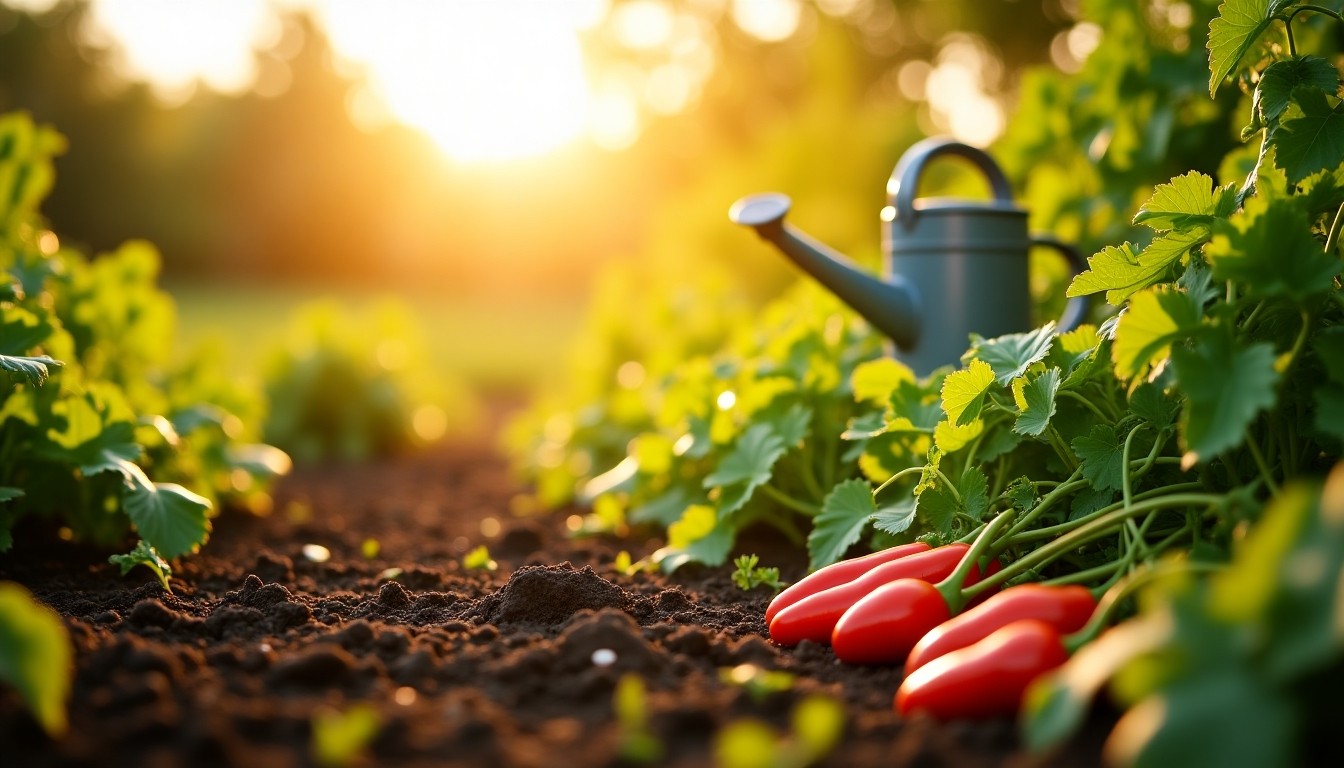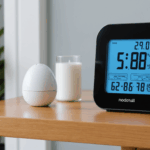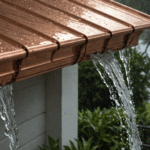One of the most pivotal decisions in vegetable gardening is choosing the right location for your garden. Often underestimated, the location impacts everything from growth rates to pest resistance and even harvest yields. For beginner gardeners, understanding the nuances of site selection can set the stage for success and yield gratifying results in your home gardening efforts.
First, evaluate the sunlight availability in your prospective garden spaces. Most vegetables thrive with at least six to eight hours of direct sunlight per day, which is crucial for their growth and fruit production. Observe the area throughout the day to ensure there are no obstructions casting long shadows, such as tall trees or buildings.
Soil quality is another critical factor. Vegetables prefer rich, well-draining soil. Test the soil for its pH and nutrient levels, and amend it with organic matter such as compost to enhance its fertility and texture. Avoid areas with heavy clay or rocky terrain, as these can impede root growth and water absorption.
Water access is essential for maintaining a healthy garden. Ensure your selected location is within reach of a reliable water source to facilitate regular irrigation. Effective watering is particularly vital during dry spells, and easy access can simplify your watering routine.
Consider the proximity to potential pest habitats. Choose an area that’s somewhat isolated from large shrubs or piles of organic debris, which can harbor insects and other pests. A location slightly elevated from its surroundings can also be beneficial for drainage, reducing the risk of diseases caused by excess moisture.
Ultimately, make sure the location is convenient, especially if you’re just getting started with beginner tips. A plot that’s easily visible and accessible increases the likelihood that you’ll regularly tend to your garden, ensuring you can swiftly address any issues that may arise.
| Factor | Optimal Conditions | Tips for Beginners |
| Sunlight | 6-8 hours of direct sunlight | Monitor light patterns; avoid shaded areas |
| Soil Quality | Rich, well-draining soil | Amend with compost; test soil regularly |
| Water Access | Easy access to water source | Consider proximity to hose or irrigation system |
| Pest Avoidance | Distance from pest habitats | Maintain cleanliness and openness |
By carefully considering these aspects of your garden’s location, you set a strong foundation for your vegetable gardening endeavors. Even small optimizations in location can lead to substantial improvements in plant health and productivity, providing a rewarding experience for both novice and seasoned gardeners alike.
tips for successful planting
Proper planting techniques are vital to the success of your vegetable gardening efforts. For beginner gardeners, following a structured approach can simplify the process and improve your chances of a bountiful harvest. Here’s a step-by-step guide to getting your vegetables off to a great start:
- Plan Your Layout: Begin by designing your garden layout to suit your space and sunlight availability. Consider companion planting, where plants that support each other’s growth are placed together, and rotation to avoid planting the same vegetable in the same spot year after year to prevent soil depletion and disease buildup.
- Prepare Your Soil: Before planting, it’s essential to prepare your soil properly. After testing and amending your soil as needed, loosen it with a garden fork or tiller to a depth of at least 12 inches. Remove any weeds, rocks, or debris, which can hinder root development. Rake the surface flat, and water the soil lightly a day before planting to create a moist environment that encourages seed germination.
- Choose the Right Time to Plant: Timing is critical in vegetable gardening. Consult local planting calendars to determine the best times to sow seeds or transplant seedlings in your area. Typically, cool-season vegetables like lettuce and spinach are planted in early spring, while warm-season crops such as tomatoes and peppers thrive in late spring or early summer.
- Plant at the Correct Depth: Seeds should be planted at a depth approximately twice their size. For transplanted seedlings, ensure the base of the plant sits at the same level it was growing at in its container. Overly deep planting can stress young plants and stunt their growth.
- Give Them Space: Proper spacing is critical to avoid competition for nutrients, sunlight, and water, which can lead to lower yields and increased susceptibility to pests and disease. Follow the spacing recommendations on your seed packets or plant labels, and be prepared to thin seedlings as needed once they begin to grow.
- Mulching: Apply a layer of organic mulch, such as straw or shredded bark, around your plants. This will help conserve moisture, suppress weeds, and regulate soil temperature. As the mulch breaks down, it will also contribute organic matter to the soil.
- Labeling: Keep track of what you plant and where by labeling your rows or sections. This can be especially helpful if you’re trying different varieties or experimenting with new crops. Use durable, weatherproof labels to ensure your notes withstand the elements throughout the growing season.
By following these steps, you provide your vegetables with a supportive environment for growth. Implementing these beginner tips in your home gardening journey will enhance your capability to nurture a productive vegetable garden. Each step, from planning to planting, plays a crucial role in ensuring healthy plants and a successful harvest.
common pest prevention
When embarking on your vegetable gardening journey, preparing for common pests is essential to safeguarding your crops. For beginners, understanding how to prevent pest invasions can mean the difference between a flourishing garden and struggling plants. Start by being proactive; most pest management is rooted in prevention rather than reaction.
One of the simplest yet most effective strategies is practicing crop rotation. By changing where you plant your vegetables each season, you can disrupt the life cycles of pests that favor particular crops, thereby reducing their numbers naturally over time. This is a foundational approach in home gardening that not only prevents pest buildup but also enhances soil health.
Companion planting is another excellent technique. Pairing vegetables with natural pest-repellent companions, such as marigolds, basil, or chives, can deter pests through scent or toxicity. These plants act as natural shields and are a fantastic addition to any beginner tips list due to their ease of implementation and dual benefits for your garden.
Keeping your garden beds clean and well-maintained is also crucial. Regularly remove debris and fallen leaves, as these can become breeding grounds for pests. Moreover, ensuring your garden is weed-free will eliminate alternative food sources for pests, compelling them to look elsewhere. This practice underscores a core principle of vegetable gardening, emphasizing cleanliness as a primary line of defense.
Physical barriers, such as floating row covers or nets, can offer protection against larger pests like birds and insects. These covers allow sunlight and rain to reach your plants while keeping unwanted visitors at bay. For beginners, these are invaluable tools as they require minimal maintenance and provide immediate results.
Regular inspection of your plants is vital. Look for signs of stress, like discolored leaves or unusual holes, which could indicate a pest problem. Early detection allows you to intervene swiftly, perhaps with a gentle solution like neem oil or insecticidal soap, both of which are effective and environmentally friendly options.
Adopting beneficial insects can also enhance your pest prevention strategy. Ladybugs, lacewings, and predatory beetles are natural allies that feed on common garden pests like aphids and caterpillars. Encouraging these “good bugs” to make your garden their home can establish a balanced ecosystem, where nature takes care of its issues under your watchful eye.
Incorporating these strategies in your home gardening routine not only protects your vegetables from unwanted damage but also fosters an environment where plants can thrive. Successfully managing pests is a rewarding aspect of gardening, making it a crucial part of any gardener’s skill set. With these preventive measures, your vegetable garden can remain a haven of growth and productivity.
watering and maintenance
Watering your vegetable garden effectively is crucial to ensure healthy growth and a bountiful harvest. For novice gardeners, understanding the nuances of proper watering techniques can make all the difference in home gardening success. Maintaining the right balance—neither too much nor too little water—is key to thriving plants.
Begin by establishing a consistent watering schedule. Most vegetables require about one inch of water per week, which you can achieve through a combination of rainfall and supplemental watering. It’s important to adapt your watering routine based on the weather, especially during dry spells when additional watering is necessary. Using a rain gauge can help monitor natural rainfall and adjust your watering accordingly.
To avoid water-related issues like root rot, focus on watering deeply rather than frequently. This encourages roots to grow deeper into the soil, enhancing their ability to absorb nutrients and withstand drought conditions. Use a soaker hose or drip irrigation system for efficient water delivery directly to the root zone. These methods minimize water waste and reduce the risk of leaf diseases by keeping foliage dry. For beginner tips, start with a basic setup and consider upgrading as your confidence in home gardening grows.
It’s best to water your garden in the early morning when temperatures are cooler and wind speed is generally lower. This timing helps minimize water evaporation and allows leaves to dry out before evening, reducing fungal disease risks. Be wary of watering in the heat of the day, which can lead to rapid evaporation and potential water loss.
In addition to watering techniques, maintenance plays a vital role in successful vegetable gardening. Regularly assess your plants for signs of water stress, such as wilting or yellowing leaves, which might indicate over or under-watering. Adjust your watering practices as needed to accommodate plant health and environmental conditions.
Mulching is another beneficial practice to incorporate. Applying a layer of organic mulch around your plants helps retain soil moisture, suppress weeds, and maintain a consistent soil temperature. As it breaks down, mulch also adds organic matter to your soil, enhancing its structure and fertility.
Don’t overlook the importance of maintaining your irrigation tools and systems. Regular inspections and cleaning of hoses, nozzles, and watering cans ensure they function efficiently and deliver optimal results for your garden.
By mastering these watering and maintenance techniques, you can build a productive and sustainable vegetable garden. The attention you give to these fundamental aspects of home gardening will yield healthier plants and more abundant harvests, supporting your journey from a novice gardener to a seasoned cultivator. Keep these principles in mind, and you’ll be well on your way to a flourishing garden filled with fresh, home-grown vegetables.
harvesting and storage
Harvesting your vegetables at the right time is crucial to enjoying the full flavor and nutritional benefits they have to offer. As you delve deeper into home gardening, you’ll develop a rhythm for recognizing when your crops are ready for harvest. Monitoring their size, color, and firmness are key indicators of ripeness. For example, tomatoes should be fully colored before picking, while cucumbers are best harvested when firm and slightly smaller than full maturity to avoid bitterness.
A gentle hand in harvesting goes a long way to preserving the health of your plants. Use a sharp pair of scissors or pruning shears to make clean cuts where necessary, reducing stress and potential damage. For vegetables like beans and peas, which can continue producing after the initial harvest, frequent picking encourages more growth, providing you with an extended yield throughout the season. Regularly check your garden, as vegetables can mature rapidly, often needing harvesting every couple of days.
Once you’ve gathered your bounty, proper storage methods ensure prolonged freshness and taste. Begin by cleaning your harvest; gently brushing off soil or washing vegetables with water and allowing them to dry thoroughly helps prevent rot during storage. Leafy greens and herbs benefit from being stored in the refrigerator with a damp cloth to retain moisture, while root vegetables like carrots and potatoes should be kept in a cool, dark place to extend their shelf life.
Understanding the specific storage needs of each vegetable is part of the learning curve in vegetable gardening. Some crops, like squash and onions, fare well in slightly warmer conditions and can be stored dry on a rack or in a breathable container. In contrast, fruits like tomatoes should be kept out of the refrigerator to preserve their flavor and texture.
Home gardening is a journey filled with learning and adaptation, and figuring out optimal harvesting and storage techniques is part of what makes cultivating your own produce so rewarding. The satisfaction of picking ripe vegetables from your garden and then enjoying them at their peak freshness is unmatched, adding another level of fulfillment to your gardening experience.
In conclusion, growing your own vegetables offers a wonderful opportunity for personal growth and a deeper connection to the food you consume. With the right location, planting tips, pest management, careful watering, and proper harvesting techniques, even beginner gardeners can cultivate a vibrant and productive vegetable garden. Embrace the joy of home gardening as you refine your skills, and savor the rewards of each harvest.










